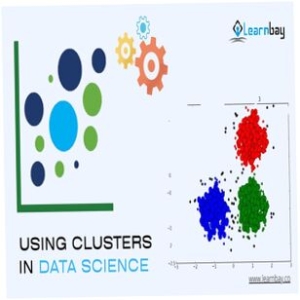Utilizing Clusters in Data SciencePosted by Rohith Reddy on September 7th, 2022  Cluster AnalysisWhen objects are grouped based on their traits in a cluster analysis, there is a high intra-cluster similarity and a low inter-cluster similarity. Why use cluster analysis?By applying a clustering algorithm to the data, data scientists and others can use clustering to extract crucial insights from the data by monitoring which groups (or clusters) the data points fall into. Unsupervised learning is a sort of machine learning that, by definition, searches for patterns in a data set with little to no human intervention and no pre-existing classifications. Clustering can also be utilized for anomaly detection to identify outliers or anomalies. In datasets containing two or more variable quantities, clustering is used to find groupings of comparable objects. In reality, this information may be gathered from various sources, including geographical, biological, or marketing databases. How Is Cluster Analysis Performed?It is important to note that cluster analysis is not the responsibility of a single algorithm. Instead, various algorithms typically perform the broader analysis task, each of which is frequently significantly different. from the others. A clustering algorithm should ideally generate clusters with very high intra-cluster similarity, implying that the data within the cluster is very similar to one another. Furthermore, the algorithm should generate clusters with low inter-cluster similarity, implying that each cluster contains information dissimilar to other clusters. Clustering and Data ScientistsClustering, as previously stated, is an unsupervised machine learning method. Machine learning can process massive amounts of data, freeing up data scientists' time to analyze the processed data and models for actionable insights. When using a clustering algorithm, data scientists can gain valuable insights from our data by seeing what groups the data points fall into. There are numerous clustering algorithms because there are numerous definitions of a cluster and how it should be defined. Indeed, more than 100 clustering algorithms have been published to date. They are a powerful technique for unsupervised machine learning. When set to work on a data set containing a very different cluster model, an algorithm built and designed for that type of cluster model will usually fail. End-to-End, GPU-Accelerated Data ScienceThe CUDA-X AITM platform, used in the NVIDIA RAPIDSTM portfolio of open-source software libraries, enables the execution of whole data science and analytics pipelines on GPUs. For low-level computation optimization, it uses NVIDIA CUDA® primitives but exposes GPU parallelism and high-bandwidth memory speed via comprehensible Python APIs. The well-known scikit-learn-like API is used by the cuML machine learning algorithms and mathematical building blocks of RAPIDS. Both single-GPU and massive data center deployments are supported by well-known algorithms like K-means, XGBoost, and many others. These GPU-based versions are 10–50 times quicker than their CPU counterparts in processing massive datasets. For more information on clustering and machine learning techniques, visit the Data Science Course in Delhi, and execute them in multiple projects. Like it? Share it!More by this author |


